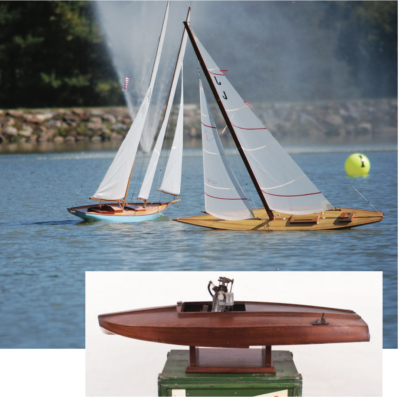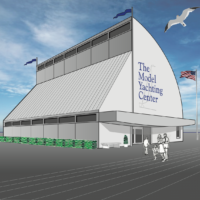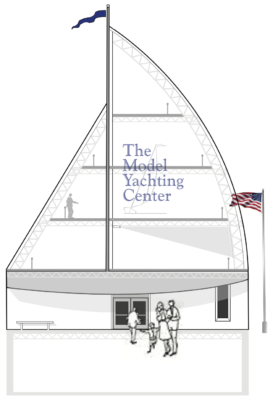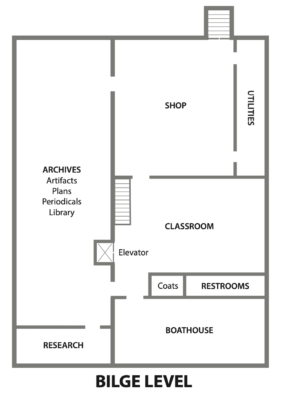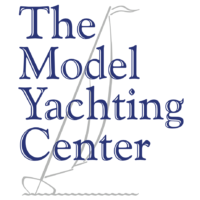 A proposal by the US Vintage Model Yacht Group
A proposal by the US Vintage Model Yacht Group
The development of a location for The Model Yachting Center, to preserve and perpetuate the sport of model yachting which has its roots in the 1850s. This facility would be made up of a museum housing various exhibit, archival and research spaces and sailing venues for local, regional, and national regattas.
Preface
The Model Yachting Center (TMYC) is a concept a few of us have been discussing for some time. Some ideas have formed better than others. All will continue to evolve as the concepts are nurtured. It was felt that we needed to begin a wider conversation about this endeavor to determine:
With the distribution of this, The Concept Paper, the United States Vintage Model Yacht Group (US VMYG) is interested in gathering input from model yachting enthusiasts. While this has been started by the US VMYG, the center would support all aspects of model yachting including all eras and types of model yachts, both power and sail.
Concern
There is no museum in the United States that has devoted any significant space or resources to the historical recognition and preservation of model yachting.
The people who are involved in this sport are aging. There are few younger people becoming involved in this sport. Many of the existing models and the associated archives have been disappearing and the potential for many more to disappear is looming every day.
They will be lost to history forever.
Justification
Our sport of model yachting has ties to many famous yachtsman and designers. 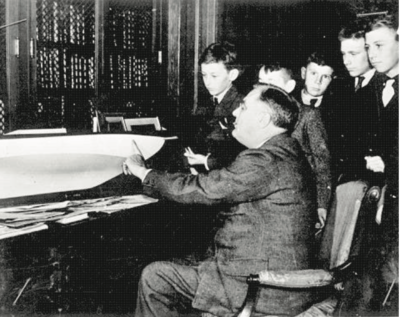 President Franklin Delano Roosevelt wasa famous model yachtsman. He used model yachts to teach his children to sail and had them at his home and the White House. Nathanael and L. Francis Herreshoff used models in their yacht design work. L. Fran- cis was a member of the Marblehead Model Yacht Club. Several other yacht designers such as Norman Skene were involved in this sport. Model yachting goes back to the mid-eighteen hundreds in the United States with early clubs in Boston, Detroit, Marble- head, New York, Philadelphia, San Francis- co, Washington, and other cities. It was a demonstration sport in the 1936 Olympics.
President Franklin Delano Roosevelt wasa famous model yachtsman. He used model yachts to teach his children to sail and had them at his home and the White House. Nathanael and L. Francis Herreshoff used models in their yacht design work. L. Fran- cis was a member of the Marblehead Model Yacht Club. Several other yacht designers such as Norman Skene were involved in this sport. Model yachting goes back to the mid-eighteen hundreds in the United States with early clubs in Boston, Detroit, Marble- head, New York, Philadelphia, San Francis- co, Washington, and other cities. It was a demonstration sport in the 1936 Olympics.
Site Options
An appropriate location is of the greatest importance to the development of The Model Yachting Center. This facility would be host to, and have ponds to accommodate, local, regional, and national regattas.
TMYC can be located on any number of sites, for example:
- One with an existing pond
- Open land with a source of water
- Open ground with high water table
Site selection would take place with input from various locations in the continental
United States. Proximity to major transportation arteries would be of maximum benefit for the most convenient access to TMYC.
A minimum of 12 to 15 acres would be an adequate site for the center. A freshwater site is preferable to a salt- water location. The site plan would be developed by a professional with specific expertise in this type of venue.
Building
An architect would be engaged to design a LEED-certified* building to house: • The museum exhibit spaces
- A library and research center
- Archival space for boats, plans, scholarly pieces, artifacts, publications, and other related items
- A boat building and restoration shop
- A classroom/auditorium
- A boathouse for local club and visitor use
- Offices and other functional spaces
*Leadership in Energy and Environmental Design
Architectural concept by John Stoudt, Rendering by Irwin Schuster
Elevation
This illustration shows a proposed cross section of the museum building and all of it floors. Below grade is the Bilge. The main entrance brings visitors into the main floor, directly above that is the main deck, then levels 3 and 4, and of course the crow’s nest.
The facade evokes a sloop and invites one into the building. The floors would house exhibits of vintage model yachts, their construction and variety, displays of the various classes supported by the US VMYG and the AMYA, traveling exhibits, a vintage power boat display, special displays such as one on early multi- hull sail boats, influential model yachting skippers and model yachts from other countries.
Exhibits would be both of the interactive and static variety.
Layout
The proposed museum building would have six floors.
- The Bilge
- Level 1
- Main Deck
- Level 3
- Level 4
- Crow’s Nest
There would an elevator, stairs, easy access to all levels with conveniently located conveniences, such as lavatories. This floor plan shows a sample layout for the Bilge (basement) of the museum, housing the items listed on it.
Sailing
Sailing Venues: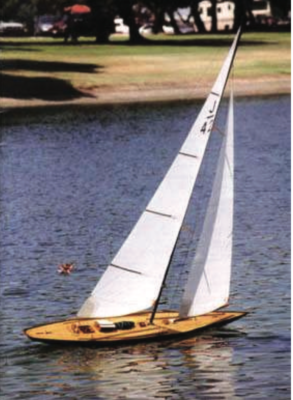
There should be sailing venues for R/C sailing, free sailing, power boats and dabbling by kids of all ages. There would be access to place boats in the water using docks and a beach for wet entry.
These areas would support the sailing of models, both power and sail on a regular basis, supporting club activities as well as regional and national regattas.
Choosing a location which is the home of a local club would give the operation a ready volunteer base.
These sailing venues could be one site designed to accommodate various boating activities or multiple lakes/ ponds to accommodate power boat and sailing events for youngsters through adults. For example, there could be a small, shallow pool where children could wade in and “sail” their simple sailboats, indoors or out.
Archives
The archives would house items not currently on display and recent donations. It 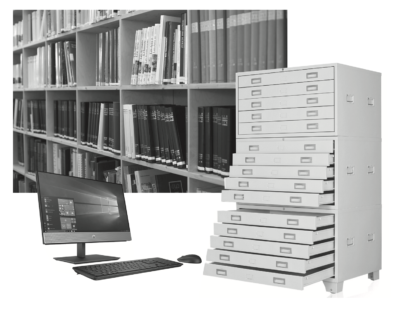 would include but not be limited to, model yachts, model yacht plans, books, photographs, videos, and other related documents. The facility would utilize various methods to store items including flat files, high density mobile filing systems, computer systems and other methods to store the archival mate- rials.
would include but not be limited to, model yachts, model yacht plans, books, photographs, videos, and other related documents. The facility would utilize various methods to store items including flat files, high density mobile filing systems, computer systems and other methods to store the archival mate- rials.
Access to the archival materials would be given to individuals who were doing model yachting research. A research room would be housed near the archives for easy access.
Education
A central focus of TMYC would be the education of children through adult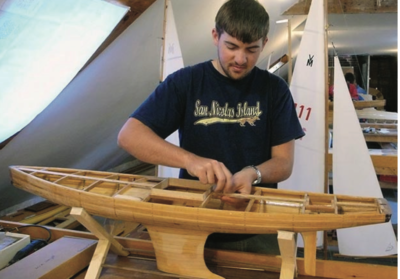 s, with programs in the building and sailing of model yachts. The facilities to support this would include a classroom/ auditorium and boat shop.
s, with programs in the building and sailing of model yachts. The facilities to support this would include a classroom/ auditorium and boat shop.
Courses would be taught in the classroom, boat shop, and on the lake. Individuals could learn how to build, restore, and sail model yachts of all types. They can learn about the history of the sport. They can have on-the-water train- ing on how to sail and race various boats, using appropriate tactics.
The Plan
Organizational Plan:
- Establish a nonprofit organization and appoint a board of directors.
- Engage a consultant with expertise in this type of endeavor.
- Acquire a piece of land with a pond or the capability to install one.
- Gain approval of the plan at the local level.
- Develop a marketing plan to begin to solicit donations.
- Utilize social media and web-based resources to maximize exposure.
- Solicit funds from various organizations, foundations, individuals and commercial enterprises.
- Begin using the sailing venue (pond) for local club, regional, and national events.
- Design and build the museum (a LEED-certified green building).
- Hire appropriate museum staff.
- Organize a volunteer group to provide support.
- Design an instructional program (youth through adult) to teach the building and
restoration of model yachts, sailing and tactics, and rules of racing. - Build the collection of boats and other artifacts and make them available through
display and for research. - Establish links to model yachting clubs, associations, publications, and parts/supply dealers.
- Confirm a long range plan – possibly a dormitory and cafeteria for multi-day activities.
Business
Business Plan:
The steps for the development and continuation of the Model Yachting Center are:
- Establish a board of directors
- Engage various professionals
- Establish a non-profit foundation
- Raise funds to develop the Model Yachting Center
Phase 1. Raise $2 million dollars to acquire the land for the center (15 acres).
Phase 2. Raise $3 million dollars to design and build the main building including a museum, sailing venue, teaching center, archival space, work area, and boat house for pond sailing.
Phase 3. Create an income stream for the center to fund the activities and operation. For example: If an additional $7 million were to be raised and invested at 6% (conservative) to support activities and expenses it would generate a yearly cash flow of $420,000. Reasonable fees could be charged for regattas and classes to help support TMYC.
Input
The organizers are looking for input. What do you think of this concept to develop The Model Yachting Center? Does it have merit? Do you think it would attract people? Where do you think it should be located? Would you contribute model yachts, other materials, and/or financially support the center? Do you think a center such as this having yacht basins (lakes) would be a good place to hold regional and national regattas? Would you be willing to serve in any way to support this endeavor?
Please send your comments to: John Y. Stoudt: jstoudt309@gmail.com
Credits: The US VMYG would like to thank the following individuals for their contributions to developing the concept and this brochure:
- Irwin Schuster – Ideation, illustrations, and development of this brochure
- Judy Bonanno, Pat Butterworth, Linda Dennis, FDR Library Archives, Jim Flach, John Stoudt, WoodenBoat School – Photographers
- Members of the US VMYG leadership team – editorial comments and recommendations

